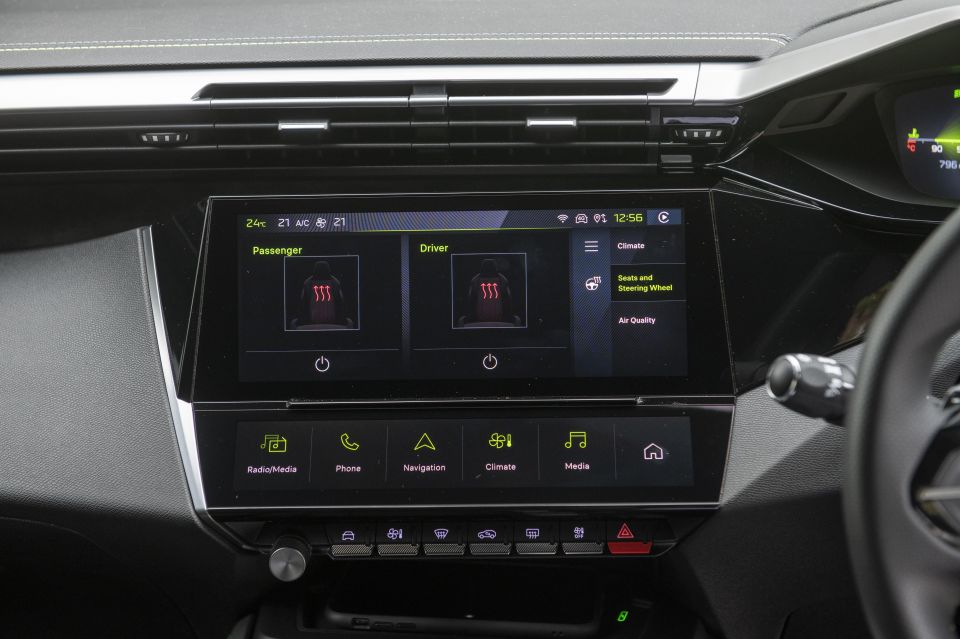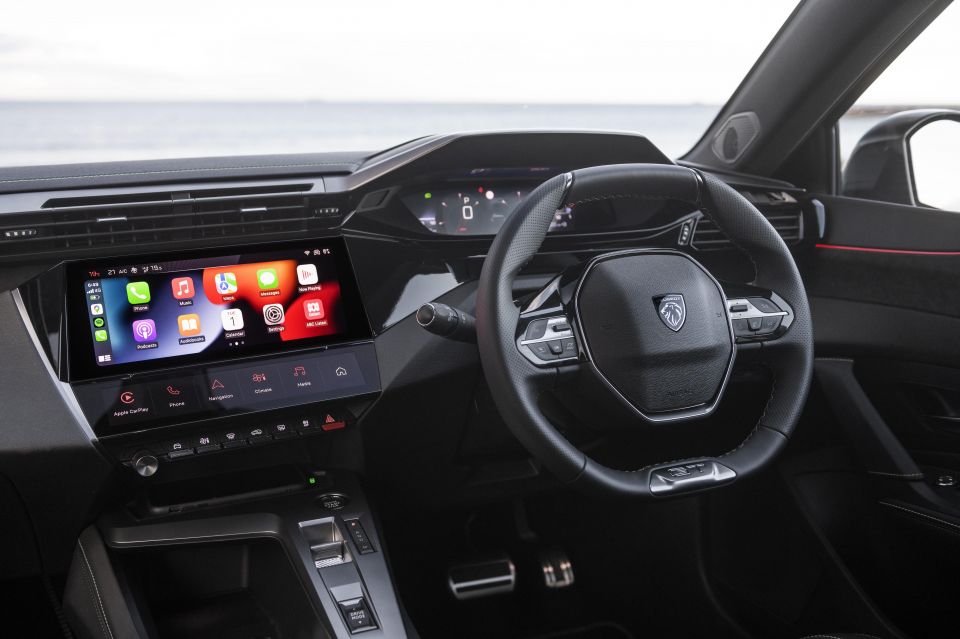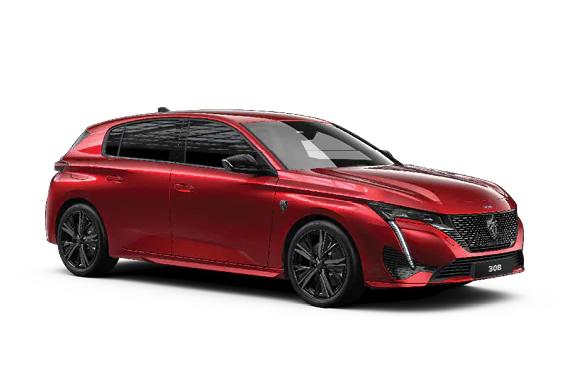

Anthony Crawford
1990 Lamborghini Countach review
5 Days Ago
France's rival to the VW Golf has luxurious aspirations, and offers a well-rounded package worthy of consideration – but it's not without its quirks



Quickly see how this car stacks up against its competition. Select any benchmark to see more details.
Where expert car reviews meet expert car buying – CarExpert gives you trusted advice, personalised service and real savings on your next new car.
The new Peugeot 308 is finally here, giving the brand’s local division a rival to the Volkswagen Golf after 18 months without one.
It’s a big deal for Peugeot worldwide. The new 308 wears the brand’s latest design language and debuts its new logo, a shield-shaped emblem harking back to a logo used in the 1960s.
The ‘300 Series’ is also one of Peugeot’s longest-running nameplates, dating back to 1932 with more than 15 million units produced since the first iteration. The 308 itself is now in its third generation.

Peugeot has made it very clear it’s aiming upmarket. Think of it as a French alternative to Volkswagen, offering a somewhat attainable premium product.
The starting price of $43,990 before on-road costs and a focus on high-spec GT variants cements that push; in its previous generation, the base 308 Active started as low as $26,990. It has the Mercedes-Benz A-Class and Volkswagen Golf firmly in its sights.
At launch there’s only three-cylinder turbo petrol power, using the only petrol engine in the global catalogue, though Peugeot Australia will add the high-output 165kW plug-in hybrid drivetrain from the larger 508 in the first half of next year.
Is Peugeot’s new small car staple worth the wait?

As mentioned earlier, the price of entry has risen quite a bit. The most affordable 308 is the GT Hatch is priced from $43,990 before on-road costs, with the 308 Wagon only available in high-spec GT Premium trim ($50,490).
Peugeot says customer feedback led to it only offering GT and GT Premium versions, even though basic Active and Allure trims are available elsewhere. They no doubt would have seen pricing start in the $30-$40,000 bracket. The local arm is open to expanding the range should there be demand, however.
In 2023 the 308 line-up will be completed by the 165kW 308 GT Sport PHEV Hatch, with pricing and specification to be confirmed closer to its launch. Expect a $10-15,000 premium over the equivalent GT Premium Hatch given Peugeot’s current electrified price structure, meaning it should sit in the $60,000 range.

2023 Peugeot 308 pricing:
Key rivals include:
Prices exclude on-road costs unless specified

Where we’ve seen a lot of the European manufacturers making obvious cuts to their cabin quality, Peugeot continues to improve its cabins in a bid to reiterate its premium positioning.
It’s the nicest small car interior this side of a BMW 1 Series or Mazda 3, and has a distinctly French flavour thanks to the latest take on Peugeot’s i-Cockpit, which has the instrument cluster raised and the steering wheel shrunken to keep the cluster in the driver’s line of sight.
I know some of my colleagues (as well as some of you reading) will lament the quirky layout, and it won’t work for everyone. I like it, and manage to find a comfortable position with the steering wheel set low.




Even the base GT comes with a lovely mix of materials and textures, with the standard sports seats finished with suede inserts and leather bolsters, smooth leather on the steering wheel and contrast stitching throughout – including green thread to match the Olivine Green exterior paint option.
The driver’s seat is manually adjustable in the GT, but the GT Premium gets full electric adjustment with memory settings, as well as lovely Nappa leather upholstery with contrast green stitching. It really is quite nice and feels properly upmarket in both specifications.
There’s a good range of adjustment, and the sporty seats hug you tight without it getting weird. While you’re cocooned by the wraparound cockpit, you won’t feel claustrophobic behind the wheel or in the passenger seat. I also love that you can extend the lower cushion, something usually reserved for luxury brands.




All versions come with a 10-inch 3D digital instrument cluster ahead of the driver, as well as a 10-inch HD connected navigation system running a suite of connected services, as well as wireless Apple CarPlay and Android Auto.
It’s running the latest Peugeot-Citroen interface, which has a different skin to the system in the new Citroen C5 X but is essentially the same architecture.
The high-resolution display and faster hardware is a major step up from previous-generation Peugeot products – essentially the rest of the existing range – and there’s a three-year subscription to various online services.
Currently enabled net-based features include online navigation with live traffic routing and updates, wireless car park information and fuel prices (refreshed daily), as well as web map search and speed camera alerts. The system supports wireless updates, including monthly wireless map updates from map provider TomTom.

Peugeot was quick to stress the customisation on offer, including multi-colour ambient lighting and themes via the infotainment system, configurable menus for the touchscreen, as well as the configurable touch panel below the display dubbed i-Toggles.
They allow you to set shortcuts such as climate controls, navigation, or smartphone mirroring.
It feels a lot more polished than the previous 308’s laggy and low-res infotainment, and with more time to play around with the settings, I’m sure it’d be very easy to set and forget for ease of daily use. You can also set driver profiles linked to your phone, so you don’t have to re-configure everything for a second driver.
Peugeot’s local team confirmed it’s working on bringing additional app-based functions like remote engine start and cabin pre-conditioning, much like we’ve seen from other brands, but they won’t be available from launch while the company’s Australian team works through the approval process with local regulations.
Wireless Apple CarPlay worked flawlessly for us between multiple vehicles, and quality from the GT Premium Hatch’s 10-speaker Focal Hi-Fi system with 690-watt amplifier was crisp. The 3D instrument cluster can be a little trippy, but you can make it 2D with a quick tap in the touchscreen.

Less impressive is the second row, which even with the extended wheelbase in the 308 Wagon remains one of the tighter rear seats in the class.
At a touch over 6’1 I was a little short for knee room behind my driving position in both vehicles, though the wagon does offer a little more space. Models fitted with the panoramic sunroof also have limited headroom for someone my height or taller.
If you and your passengers aren’t quite that tall, however, it’s well finished and featured to make up for it. There’s a fold-down centre armrest with cupholders, rear air vents, USB charge ports behind the centre console, map pockets, bottle holders in the doors, as well as the requisite ISOFIX and top-tether points for child seats.
You’re also not really shortchanged with materials in the back either like some rivals, with just about all the same high-quality trims and surfaces as the front.




Part of the reason for the tight rear seats is the large boot in both body styles, with up to 412L available in the 308 Hatch and 608L in the 308 Wagon.
Fold the rear seats and that expands to 1295-1323L in the Hatch, and 1634L in the wagon. The GT Premium Hatch quotes a little less due to the subwoofer, which eats into the underfloor area – it has 384-1295L.
The 308 Wagon also offers a 40:20:40 split rear bench for added practicality when stowing longer items. The 308 Hatch retains a 60:40 split.
It’s worth noting there’s no spare wheel available in any 308 variant, with a tyre repair kit standard across the range. Something to consider if you venture out of town often or drive in areas with lots of construction.

At launch, GT and GT Premium models will a 1.2-litre three-cylinder turbocharged engine, driving the front wheels via a standard eight-speed automatic transmission sourced from Japan’s Aisin.
Outputs for the turbo triple are a quoted 96kW (5500rpm) and 230Nm (1750rpm). Peugeot claims a 0-100km/h time of 9.7 seconds, on the way to a V-max of 209km/h.
If that’s not enough grunt to match the 308’s sleek silhouette, there’s a more powerful 1.6-litre turbocharged plug-in hybrid option coming next year, which has system outputs of 165kW and 360Nm. More about the PHEV will be detailed in the new year – but according to European specs it cuts down the 0-100 time to 7.5 seconds.
Fuel consumption for 1.2-litre models is rated at 5.3L/100km on the combined cycle for both 308 Hatch and Wagon body styles, with emissions sitting at 120g/km. The fuel tank measures 52 litres, and takes minimum 95 RON premium unleaded.

The media launch for the Peugeot 308 was held in Gerringong, NSW, featuring an array of tight, twisty mountain roads, suburban streets, and high-speed highways.
It was a good setting to test various aspects of the 308’s driving character, and I came away quite impressed with the not-so-little Pug.
I’ll cut to the chase – the three-cylinder petrol engine won’t set your pulse racing. There’s good low-down response and a thrummy, characterful engine note under acceleration, but it doesn’t quite live up to the GT branding.
Peugeot’s 0-100 claim of 9.7 seconds will no doubt draw criticism in the comments section, but like a lot of modern turbocharged engines and low-output EVs designed for predominantly city use, it gets up to 60km/h with more than enough pace for the average buyer.

With that said, the 308 is a GT in the way it effortlessly cruises along, with a cabin that’s well insulated for the segment, pliant and balanced ride, as well as linear, accurate driver controls.
It’s also more than capable of sitting at 110km/h for extended periods of time, particularly in GT Premium models fitted with Lane Positioning Assist that, combined with the adaptive cruise control, facilitates Level 2 semi-autonomous driving.
Even under harder throttle the turbo triple is hardly thrashy or too loud, though some may find its gravelly tone unrefined compared to a more powerful four-cylinder engine. It sort of performs like a diesel, without the clatter.
The eight-speed automatic is one of the better shifters in the Peugeot-Citroen catalogue, and unlike the Citroen C5 X is decisive at low speeds. Even when flicked to ‘manual’ using Sport mode, it’s responsive to inputs from the paddles.
Combine this with a taut, enthusiastic chassis, and you have the basis of a fun little car. If only there was a more powerful version of the 1.2-litre turbo available – perhaps the 114kW/240Nm tune from the related 2008 SUV would suffice, but alas the 308 doesn’t seem to offer this spec anywhere.

Where expert car reviews meet expert car buying – CarExpert gives you trusted advice, personalised service and real savings on your next new car.
This will be somewhat addressed by the 165kW/360Nm 1.6-litre PHEV next year with its brisk 7.5-second 0-100 claim, though that’s certain to come with a hefty price jump, and the added weight of the lithium-ion battery may blunt the sharp handling. We won’t know for sure until it lands in the first half of next year.
I enjoyed some of the twistier sections of our test route, which took us up Saddleback Mountain in some parts. In these tighter, technical sections of road, the 308 was particularly well equipped for some fun.
The lack of grunt is less of an issue given you’re rarely reaching the speed limits here, low-speed corners allow you to make the most of that small steering wheel with quick ratio, and you can enjoy the hunkered down, eager dynamics.
I hopped into the 308 Wagon and immediately felt the difference in character courtesy of the added overall length and longer wheelbase, making it feel a little more settled and relaxed.
The Sportswagon (or SW) still handles with a bit of verve, but isn’t as sharp or eager as the Hatch. It has more of a tourer vibe, again a touch more grunt wouldn’t go astray.

Peugeot harped on a bit about the new driver assistance technologies, and the new Lane Positioning Assist is a pretty accurate and intuitive system that does what it says on the tin almost all the time.
My main gripe is the sophisticated lane centring system isn’t offered on the base GT despite its premium pricing, even as an option, meaning you’ll have to stump over $50,000 on the road for a 308 with semi-autonomous driving capability.
Rivals from mainstream brands generally have this stuff fitted as standard from base, which further fuels my frustration, but rivals like the Audi A3 and Mercedes-Benz A-Class require option boxes to be ticked to get even adaptive cruise control – and they start at higher price points.
The Pug’s blind-spot monitoring has longer range now thanks to radar sensors in place of sonar, and the speed sign recognition allows you to click ‘OK’ on the steering wheel to adjust the cruise control if the limit changes.




308 GT highlights:


308 GT Premium adds:








*Metallic paints cost $690 ** Premium metallic paints cost $1050

The new-generation 308 family doesn’t currently have an ANCAP safety rating, but the range wears a four-star Euro NCAP rating overseas.
In Euro NCAP testing, the Peugeot 308 managed 76 per cent for adult occupant protection, 84 per cent for child occupant protection, 68 per cent for vulnerable road users and 65 per cent for safety assist.
Peugeot Australia had no further comments around the prospects of a local crash test and score, given there could be differences in specification between local and overseas models. CarExpert understands irrespective of driver assistance specification, the 308’s 76 per cent score for adult occupants is below the five-star threshold.

Standard safety features include:
308 GT Premium adds:

Like the wider Peugeot passenger line-up, the 308 range is covered by a five-year, unlimited-kilometre warranty. Scheduled maintenance is required every 12 months or 15,000 kilometres – whatever comes first.
If ongoing costs have been a barrier to you owning a French brand, Peugeot has recently introduced very competitive service packages – $1000 for three years, and $1800 for five.
Compared to paying as you go, that represents a saving of up to $689. It also makes the Peugeot 308 quite competitive against rival makes. Service pricing details for the 308 GT Sport Plug-in Hybrid will be announced closer to its launch next year.
In terms of real-world fuel consumption, our short time with the 308 wasn’t really representative of typical everyday driving, but over mixed conditions with plenty of spirited stints, all our test vehicles kept in the sixes and sevens, which is pretty impressive.

There’s a lot to like about the latest 308. It’s still distinctly French, but is also as mainstream as it’s ever been – for all the right reasons.
It’s made huge strides in terms of ergonomics and technology, particularly assistance and infotainment features, and the attention to detail in the cabin execution has elevated the Peugeot beyond even premium German alternatives.
The Pug also drives well, is impressively efficient and offers a practical boot – especially as a wagon. Plus, it stands out in traffic, offers vibrant colour options missing in today’s automotive world, and Peugeot has made the ownership proposition as competitive as ever.

It’s not perfect though. The premium pricing, particularly for the entry-level 308 GT, is dear against competitors that offer more features from the base level. It’s also likely to get a four-star safety rating from ANCAP unless there are drastic changes to the local specification.
For many buyers the three-cylinder petrol engine’s outputs also won’t cut it, and the Peugeot badge doesn’t have the same allure as Audi’s four rings or the Mercedes-Benz three-pointed star to justify opting for what will be perceived as an entry-level powertrain despite its merits. The quirky i-Cockpit design may also prove to be a turn off.
But if you’re looking for something a little nice, different, unusual even, the Peugeot 308 is a lovely little thing. Also, for all my readers with good taste, the 308 Hatch’s Olivine Green no-cost hero is irresistible.
Mieux vaut tard que jamais, Peugeot…

Click the images for the full gallery
MORE: Everything Peugeot 308
Where expert car reviews meet expert car buying – CarExpert gives you trusted advice, personalised service and real savings on your next new car.
James is an automotive journalist based in Melbourne, Australia. Before joining CarExpert.com.au in 2020, James has worked at leading auto media outlets including Carsales and CarAdvice, as well as at Pulse agency for Ford Australia's communications team. In 2019 James made Mumbrella's 'Top 20 most prolific web authors in Australia' list after publishing 1,360 articles between March 1, 2018 and February 28, 2019 for CarAdvice. James is also an Ambassador for Drive Against Depression – an Australian charity whose mission is to support mental wellness through the freedom of driving and a shared love of cars.


Anthony Crawford
5 Days Ago


Matt Campbell
4 Days Ago


James Wong
3 Days Ago


Max Davies
2 Days Ago


Josh Nevett
1 Day Ago


Marton Pettendy
16 Hours Ago